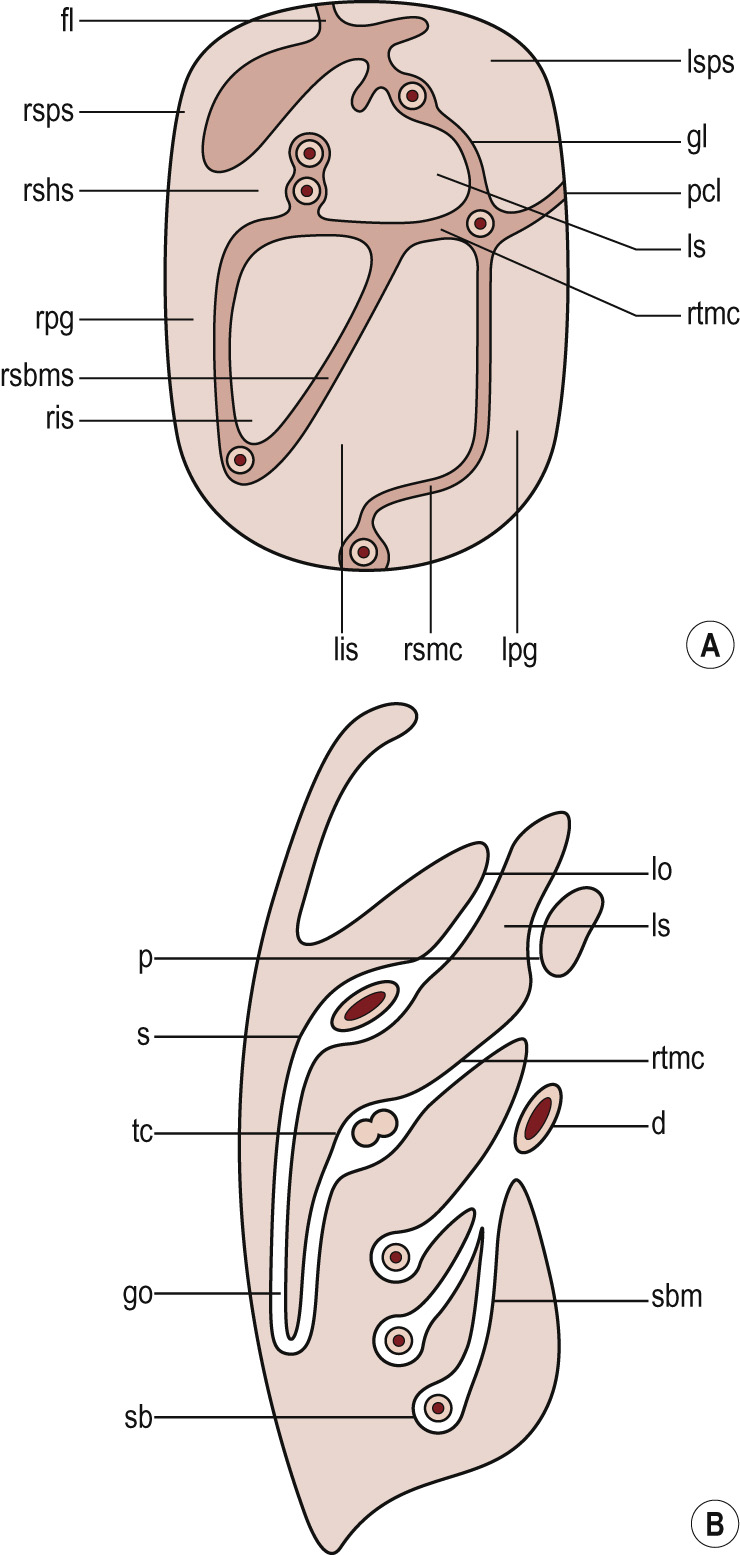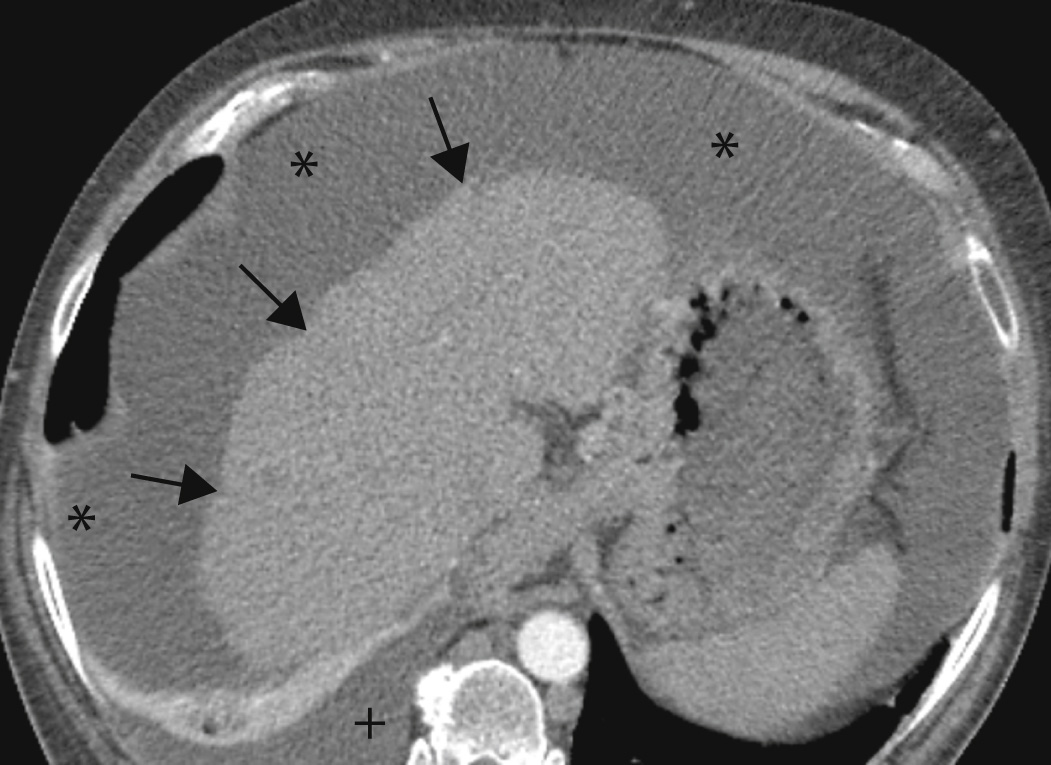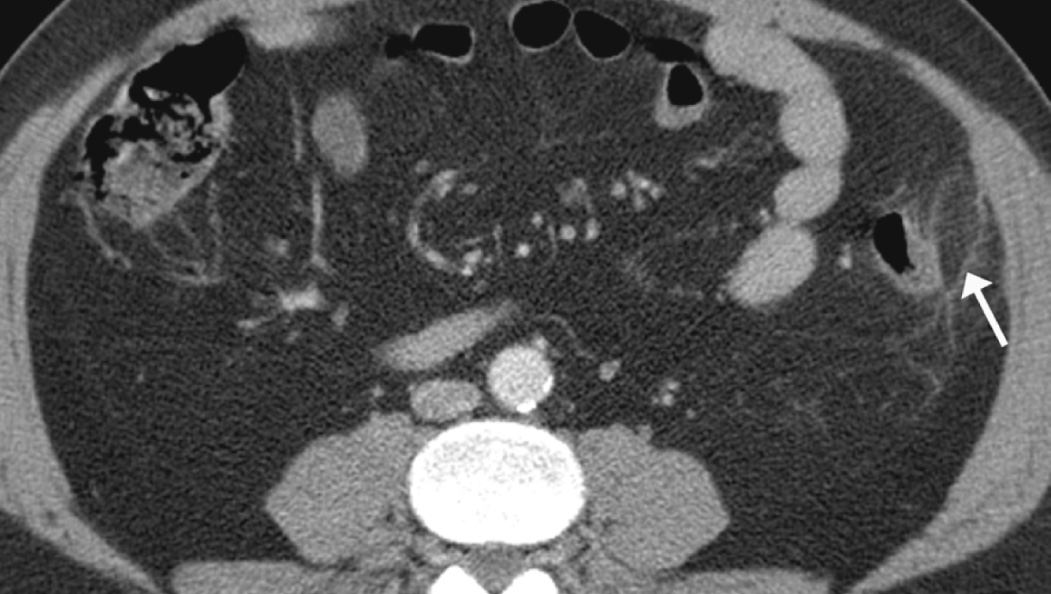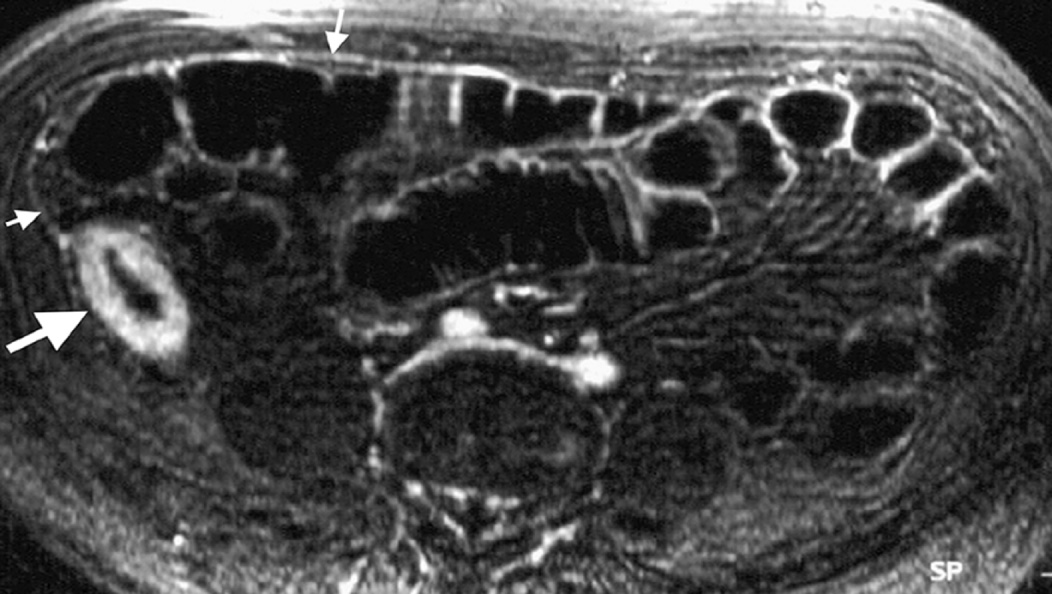Physical Address
304 North Cardinal St.
Dorchester Center, MA 02124
>100 ml of free fluid within the peritoneal cavity due to benign or malignant causes
Transudative fluid: portal hypertension/cirrhosis/heart failure/nephrotic syndrome
Exudative fluid: infection/peritoneal carcinomatosis
Blood: trauma/tumour rupture/haemorrhagic diathesis
Purulent fluid: intestinal perforation
Others: bile (biliary leakage)/chyle (lymphatic obstruction)/pancreatitis fluid
Exudates may be limited by peritoneal reaction/adhesions ▸ transudates diffuse freely
Ascites usually seen in the pouch of Douglas (lowest most posterior space) ▸ upper abdominal ascites usually collects in Morison's pouch/hepatorenal space (most dependent area) ▸ fluid migrates to upper abdomen due to respiratory induced lower hydrostatic pressures ▸ fluid migrates along paracolic gutters – preferentially the right (as it is deeper and wider than the left and without an obstructing phrenicocolic ligament)
Attenuation values range between 0 and +30 HU (>30 HU with increasing protein content or haemoperitoneum)
Loculated peritoneal fluid : this is due to benign or malignant adhesions ▸ it appears as a cystic lesion with mass effect
This can be caused by a perforation of a hollow viscus, abdominal trauma, surgery or infection
This is able to detect minute quantities of free air ▸ free air is most commonly seen anterior to the liver (if the patient is supine)
A localized collection of pus within the peritoneal cavity
It initially appears as a mass of soft tissue attenuation – it then undergoes liquefactive necrosis with a mature abscess demonstrating wall enhancement and a near water attenuation centre (together with obliteration of the adjacent fat planes) ▸ gas within a loculated fluid collection is not pathognomonic for an abscess (a necrotic non-infected tumour or mass communicating with the bowel may contain air)
A generalized infective/inflammatory collection of intraperitoneal fluid occurring secondary to bacterial, granulomatous or chemical causes (bacterial peritonitis may be primary or secondary to an intraperitoneal abscess or due to rupture of a hollow viscus)
Ascites ▸ peritoneal (± mesenteric) thickening
This is rare and can be caused by rupture of a caseous lymph node or direct GI tract involvement by disease, lymphatic or haematogenous spread
High attenuation proteinaceous ascites (20–45 HU) ▸ thickening and nodularity of the peritoneal surfaces ▸ enlarged low attenuation lymph nodes
Rare chronic peritoneal inflammation, common in patients undergoing continuous ambulatory peritoneal dialysis ▸ rare causes: long-term β blockers/sarcoidosis
Peritoneal thickening ▸ peritoneal calcification ▸ loculated fluid collections ▸ small bowel tethering
This occurs either as a result of torsion or from a spontaneous venous thrombosis ▸ it is a benign, self-limiting condition presenting with acute abdominal pain
Epiploic appendages: small pouches of peritoneum filled with fat and situated along the colon and upper part of the rectum
An ovoid non-compressible mass of high reflectivity situated under the abdominal wall
A circumscribed fatty area with high attenuation streaks, often in the right lower quadrant
In the case of epiploic appendagitis the lesion is seen in contact with the serosal surface of the colon (and usually exhibits a hyperattenuating rim and a central area of high attenuation corresponding to the thrombosed vessels)
It is also associated with mild local bowel wall thickening





Rotational anomalies around the axis of the superior mesenteric artery occur when the normal process of fetal gut development is arrested
It is characterized by the reversal of the normal relationship between the superior mesenteric artery and vein. The artery is now located to the right of vein ▸ there is twisting of the mesentery around the artery ▸ there is an absence of a normal horizontal duodenum
It is usually asymptomatic in adults
Internal herniation occurs when the bowel and its mesentery can herniate into pouches or openings within the visceral peritoneum
Paraduodenal hernia : this is the commonest type and is caused by small bowel entrapment under the right or left mesocolon ▸ 3 times more common on the left
Right-sided paraduodenal hernia : bowel herniates through Waldeyer's fossa (behind the SMA and inferior to the third part of the duodenum) ▸ imaging findings include encapsulated small bowel loops within the right mid-abdomen with anterior displacement of the right colic vein, looping of the small intestine around the superior mesenteric vessels and an abnormal position of the superior mesenteric vein relative to the artery
Left-sided paraduodenal hernia: bowel herniates through Landzert's fossa located at the duodeno-jejunal junction ▸ the bowel becomes entrapped behind the descending mesocolon within the paraduodenal fossa with anterior displacement of the inferior mesenteric vein by the dilated encapsulated bowel loop ▸ CT shows a cluster of dilated bowel loops behind the stomach and pancreas, lateral to the duodeno-jejunal junction with anterior stomach displacement
Transmesenteric hernias : most common paediatric internal hernia, related to congenital mesenteric defects ▸ in adults usually related to previous surgery (e.g. Roux-en-Y anastamosis) ▸ more likely than other hernias to develop volvulus ▸ on CT appear as a cluster of dilated loops lying adjacent to the abdominal wall without overlying omental fat lateral to the colon which is displaced centrally – the mesenteric pedicle is engorged, stretched and crowded
The commonest subtype of a mesenteric cyst – it represents a congenital malformation of the bowel lymphatic vessels, frequently surrounding the loop of bowel from where it originates
This can demonstrate internal septations
A large, thin-walled, single or multiloculated cystic mass ▸ its contents are of water-to-fat attenuation
Become a Clinical Tree membership for Full access and enjoy Unlimited articles
If you are a member. Log in here